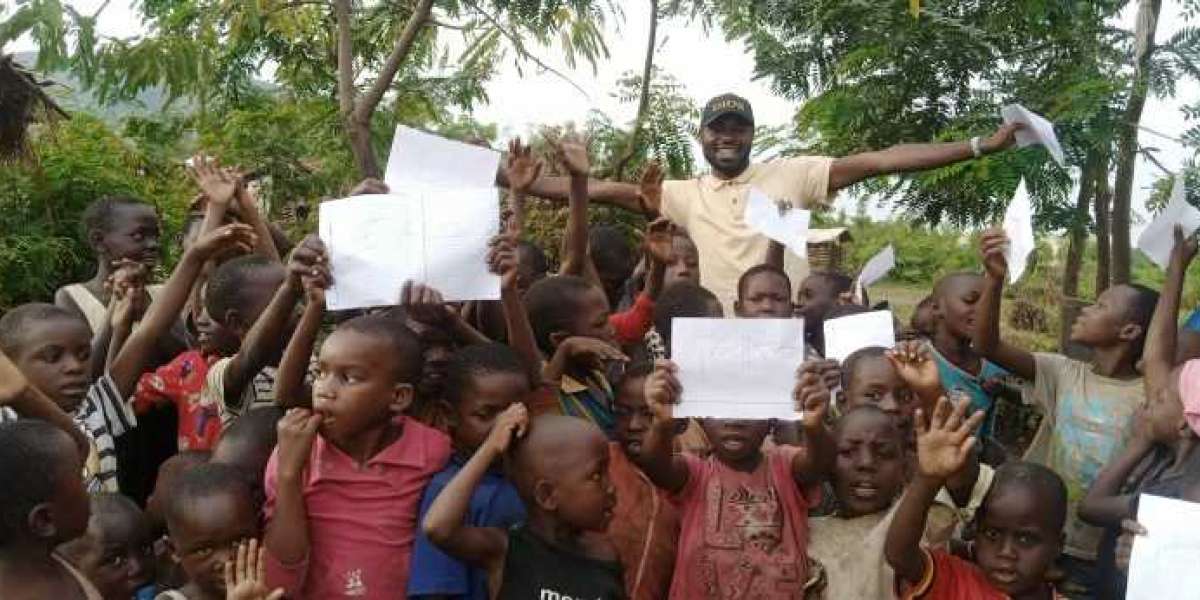International Cities of Peace provides each member City of Peace with empowering resources that builds their capacity to advance safety, prosperity, and quality of life in their community. Here are plans from some of the Cities of Peace, from around the globe.
Diana Jomo, Dandora, Nairobi, Kenya: City of Peace.

Quote: The St. Benedict Community Centre offers primary education, feeding program, spiritual nourishment and talent nurturing to less privileged children, some of whom are rehabilitated from Dandora — the largest toxic dumpsite in Nigeria.
Vision: To change one life at a time for a prosperous community. Their mission is to provide support and knowledge that restores human dignity. Their motto is: Education is key to success. The Centre strives to
meet the following objectives:
• Establish programs aimed at instilling christian and moral values in children.
• Provide quality and accessible education as per the Kenyan curriculum.
• Mobilize human and material resources necessary in provision of education.
• Identify, nurture and develop talents in children.
• Identify and support needy children to attain education and good health.
• Create interactive forums for children and society.
• Fight discrimination of all forms.
• Liaise with like-minded individuals’ organizations and institutions to uplift
the lives of children so that they can have basic quality of life.
• Provide nutritious meals to children for healthy growth and development
Paula Osterday and Dr. Ruth Lim, Mesa, Arizona: City of Peace
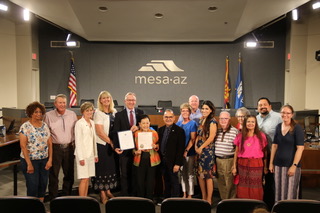 Quote: The Mesa community, like many others in Arizona and across our nation, is polarized when it comes to politics and issues of race and gender. This can be seen in local social media outlets, Like NextDoor and through other local media, such as the Arizona Republic newspaper and on local TV programming. In the absence of a federal immigration policy, there is much hatred and vitriol directed toward immigrants. Many of my white neighbors express fear about becoming a minority race. Leaders of groups serving LBGTQ and transgender people are expressing fear and concern about their safety.
Quote: The Mesa community, like many others in Arizona and across our nation, is polarized when it comes to politics and issues of race and gender. This can be seen in local social media outlets, Like NextDoor and through other local media, such as the Arizona Republic newspaper and on local TV programming. In the absence of a federal immigration policy, there is much hatred and vitriol directed toward immigrants. Many of my white neighbors express fear about becoming a minority race. Leaders of groups serving LBGTQ and transgender people are expressing fear and concern about their safety.
We plan to kick-off an official Human Library event in Mesa through the Mesa Public Library. We envision this becoming an annual event and possibly a more frequent event as the event becomes more well known. We are in the early planning stages of the event however we believe as more and more citizens participate, hearts and minds will be transformed and a more peaceful community will result. This effort is a long-term strategy however its foundation doesn’t rest on just one individual but a group of community institutions and organizations that can be there for the long haul.
Dr. Liu Cheng and Zhang Jianjun, Nanjing, China: City of Peace
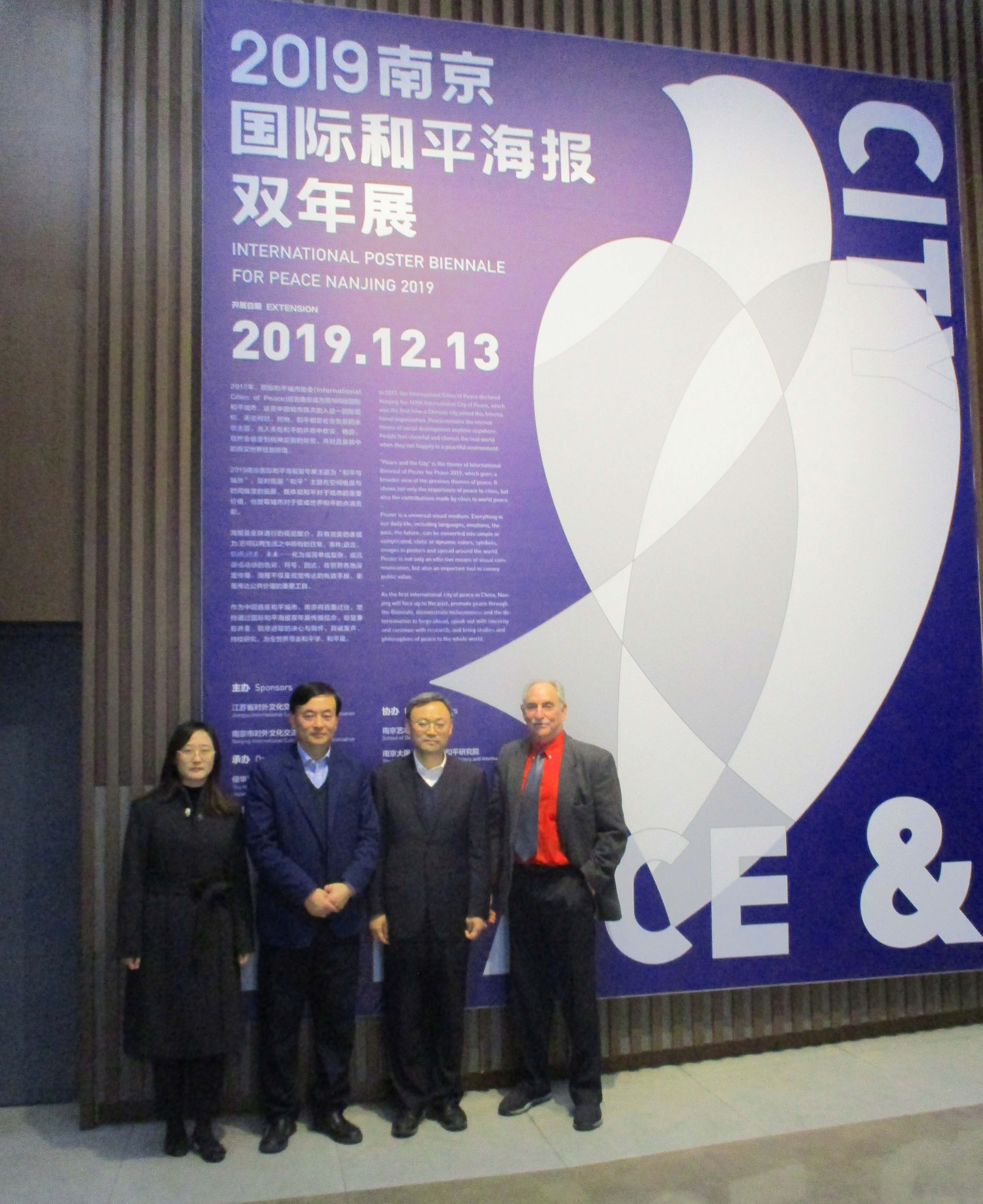 Quote: To advance regional peace education and peace research, we take efforts to advance peace education in primary and secondary schools and gradually incorporate peace courses into the course system of basic education in Nanjing. We will select pilot universities to launch courses of peace studies and conduct talents cultivation on peace studies and international student exchange programs, thus to promote the interdisciplinary construction of peace studies in universities. We will carry out peace education activities on National Memorial Day and International Day of Peace, and advance the network building of peace education in schools, communities and society, in order to form the universal peace education in Nanjing.
Quote: To advance regional peace education and peace research, we take efforts to advance peace education in primary and secondary schools and gradually incorporate peace courses into the course system of basic education in Nanjing. We will select pilot universities to launch courses of peace studies and conduct talents cultivation on peace studies and international student exchange programs, thus to promote the interdisciplinary construction of peace studies in universities. We will carry out peace education activities on National Memorial Day and International Day of Peace, and advance the network building of peace education in schools, communities and society, in order to form the universal peace education in Nanjing.
To launch various peace activities, we will hold art exhibitions and recreational and sports activities on peace to create a good social atmosphere for the construction of the international city of peace. We will hold public lectures for civilians, host international peace forums and organize volunteer activities on peace. We inspire all sectors of the society to participate the construction of the international city of peace in different ways.
NOTE: Nanjing was the first City of Peace in Chine. Now there are three, Weifang and Zhijiang. This year they produced the first Peace Studies Journal in their country.
Paulo Barddal, Curitiba, Paraná, Brazil: City of Peace
 Quote: The challenge we face is to have more time and money for our actions for Peace, all our work is voluntary, I have to divide my time between my professional work and the work for Peace.
Quote: The challenge we face is to have more time and money for our actions for Peace, all our work is voluntary, I have to divide my time between my professional work and the work for Peace.
I look for where I am going on this mission of peace. In my professional work, I distribute origami hearts and smiles for peace. I speak from person to person, one by one that we need to build peace and I deliver the hearts saying for peace in the world we just need one Heart and a Smile. I voluntarily do this work distributing hearts and smiles in hospitals, schools, halfway houses, wherever I go.
Peace is my Supreme Mission, I intend that in each person that I have contact in each one to ignite Their Hearts, call of Peace, that peace depends on the action of each one of us. And with gestures of respect, love, rejects, joy, benevolence, we can change the world.
John Menjo Tilji, Kabernet, Kenya: City of Peace
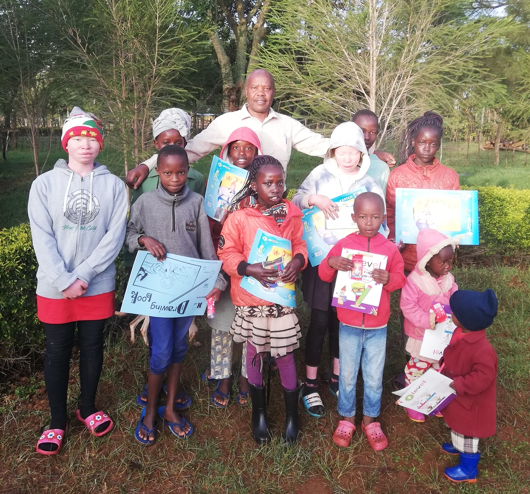
Quote: Refugee children of the Maasai tribe.
The combination of political incitement, struggle for land and pasture, water, minerals and forests has created a never ending war between indigenous communities of the Rift Valley. Retrogressive cultural practices such as cattle theft, female genital mutilation, and child marriages also prevent children from going to school, and school-age children are being used to carry out cattle thefts; thus preventing them from participating in activities with their peers.
Vision: Cultivate a culture of peace through education – Peace School.
I conduct peace education in schools in conflict environments, and so I spend more time with my children Art program, incorporating student art, lessons, toys, play and storytelling exchanges with over a dozen other countries. This is meant to support displaced children through the acute stress of displacement and life on the run from conflict, and to help them learn how to feel safe in an environment that is often not safe.
I believe that Early Education is the place to build a foundation that will help make these changes become sustainable. If the kids grow up at a young age living these learned ideas, they have a much better chance to incorporate them into their adult lives.
And since they have been so impacted by violence, we are including Trauma Informed Education (TIE) to offer an appropriate, culturally adapted opportunity to them for learning.
I have also incorporated ecology, gardening, community involvement, small business and other community efforts, and The Peace School idea is now part of a larger local and regional plan to focus on peaceful coexistence, education, and a stronger community involvement in making the Kenya Rift Valley region a safer place to live.
Mistru Tesfaye, Bahirdar, Ethiopia: City of Peace
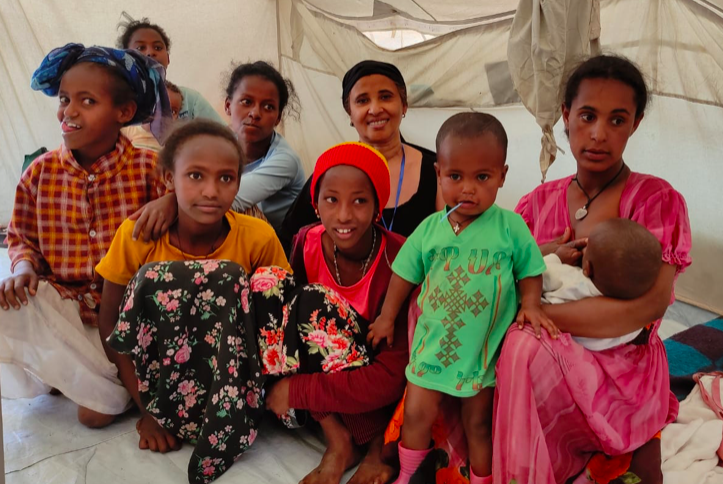 Quote: Challenges include Civil War, Drought and Poverty – Ethiopia has huge development challenges in terms of food, education, health, water and sanitation and other basic needs.
Quote: Challenges include Civil War, Drought and Poverty – Ethiopia has huge development challenges in terms of food, education, health, water and sanitation and other basic needs.
Vision: The staff at Peace 1st Ethiopia provides practical services to the Ethiopian community as a whole. These services are required to meet its mission of advocating peace by providing:
• Clean water and life sustaining food stuffs to people effected by war, living in war zones and those in need living in obscure rural areas.
• Teaching local farmers how to plant drought resistant plants and trees and educate them as to the benefits of such planting schemes.
• Bring warring factions together through the medium of all inclusive sports events
In June 2022 staff from Peace1stEthiopia visited an IDP camp in Debark, in the Northern region of Ethiopia, and gave 150 displaced women and children, displaced by the recent conflict, food and aid. In the future, we intend to invite delegates from the top 10 peaceful countries in the world, as identified by the Global Peace Index, and have them plant Trees for Peace side by side on land temporarily.
Samuel Muderhwa,Bukuvu, D.R. Congo: City of Peace
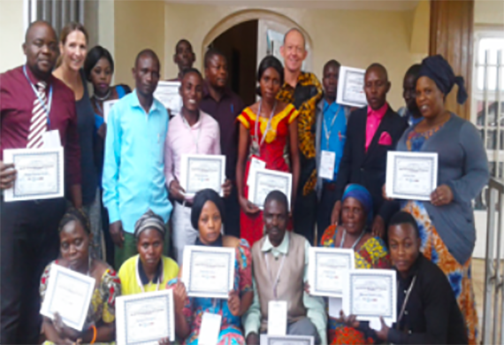
Quote: Our area has a gret need for training, trauma rehabilitation, psychotrauma, mediation, restorative justice and peace building in schools,
VISION: Focus on resolving conflict at community level. We strive to establish a society where people and communities are empowered with the skills to overcome conflict and take charge of their destiny.
• Peace and Conflict Resolution (PCR) Foundation are committed to reduce and break the cycle of violence and poverty that continues to fuel local community conflict.
• We are committed to promote a culture that nurtures peaceful relations at grass roots level.
• We believe in the importance of collaboration and aim to build strong networks with partner organizations who share in our vision of peace building and providing humanitarian support.
• Equipping the generation to come with the leadership capacities and peace building skills necessary to end the cycle of violence.
Dr. Tulsi R. Maharjan, Franklin Township, NJ. United States: City of Peace
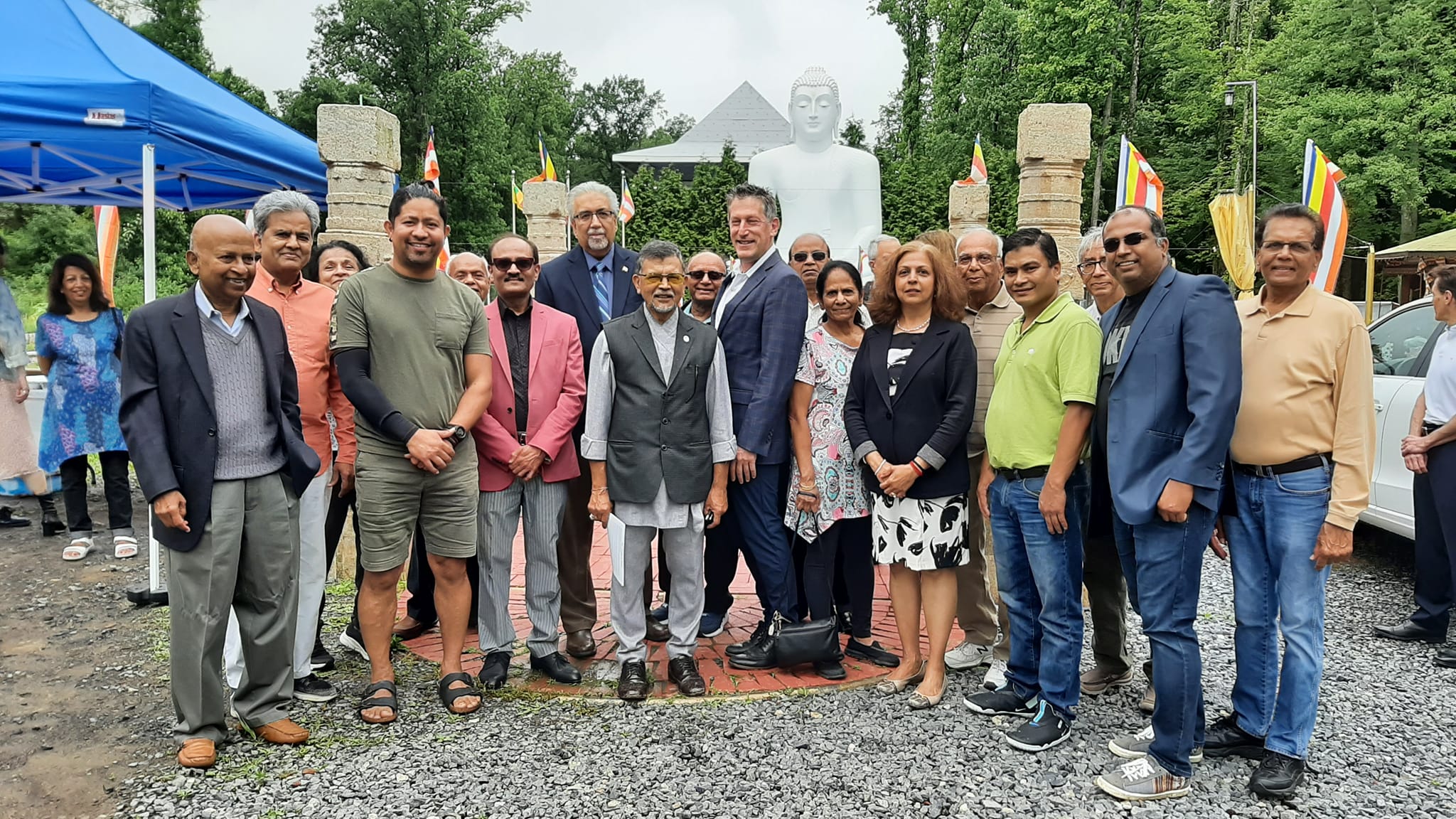
Quote: Our focus is on bringing communities together to make them aware of the importance of Peace building by holding annual International Day of Peace events where community leaders and various faith communities participate in this special program. We are collaborating with many faiths’ community groups.
We also conduct special flag ceremony during our annual Peace day event so that children can proudly carry their national flags and pretending they are representative of those counties and saying MAY PEACE PREVIAL ON EARTH in their native languages. This is a great way to teach children and young adults socially appropriate ways of dealing with conflict.
We also invite local, state, and national elected officials to this ceremony, where they read proclamation to promote peace. Partnering with local organizations that community members trust has helped to build better relationship and our participation has grown in our community events.
Bangi Nakintu Esther, Nyendo, Uganda: City of Peace
 Quote: The main community challenge am addressing is working with the majority of people who have low standards of living that has resulted into a high criminal rate that is theft, robbery ,the denial of children accessing formal education which would have transformed them into responsible and peaceful citizens rather than being criminals.
Quote: The main community challenge am addressing is working with the majority of people who have low standards of living that has resulted into a high criminal rate that is theft, robbery ,the denial of children accessing formal education which would have transformed them into responsible and peaceful citizens rather than being criminals.
We hope to encourage children’s access to formal education in order to have responsible and peaceful future generations. This is done through much sensitisation, guidance and counseling of the mass through holding meetings ,drama and home visit. We also hope to integrate service learning with young learners. This will help them to practice on how to take an action to solve the problem in their community. They don’t need to wait until they grow up to change the world this will help them to grow up as peace makers.
Banfogha Ngo, Bamenda, Cameroon: City of Peace
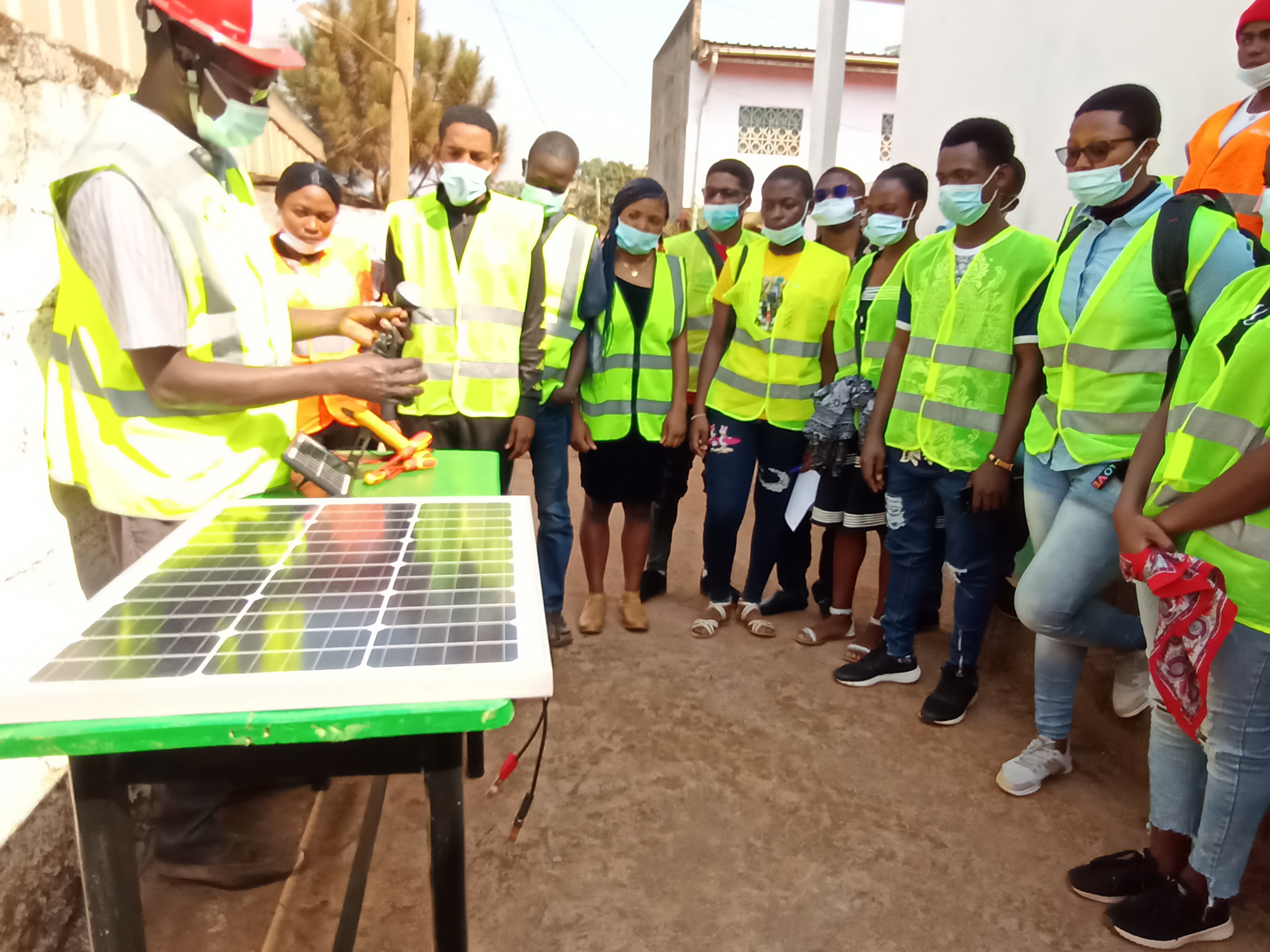
Quote: We created a youth empowerment center in Bamenda, which has empowered 229 youths since creation in 2019 and 85 currently undergoing training.
We also set up a psychosocial support unit, which provides counseling sessions, and social activities like sport to trainees as we notice signs of distress, isolation and other as most beneficiaries are crisis affected youths.
We still have some challenges with limited training equipment and management fee for payment of monthly stipends to the trainers and management team who are also displaced persons. Project results by 2025 include; Needs analysis to fill the gap on the labour market, 3 year training program, 500 students trained (full-time and part-time) by 2025, 10 teachers trained by our technical partners, 8 curricula developed, tailor made in co-creation between International and Cameroonian institutes, on solar, wind, hydro power, on the techniques of power generation, on business and leadership skills, and on ICT, 1 local EN-power hub created, 3 local summits and EN-power ecosystem with different national and international stakeholders in place for global EN-power hubs to be created.
Aggrey Kere, Ruaraka, Kenya: City of Peace
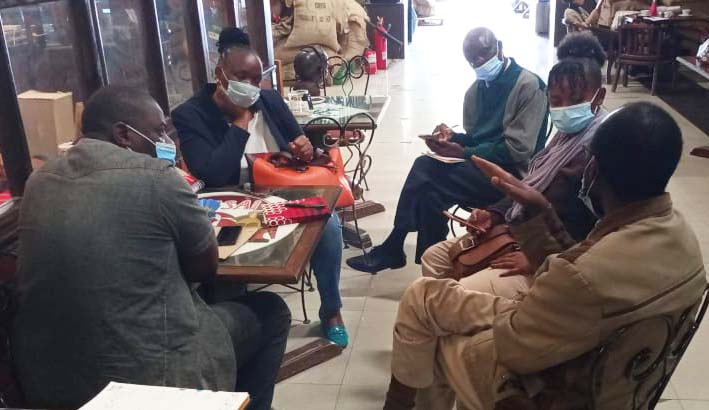 Quote: Bruaraka is the second largest industrial zone in Kenya. The primary intent is to create an information portal to enhance grassroot voter education and citizen data journalism to provide accurate, timely and informed electoral intelligence for informed decision making.
Quote: Bruaraka is the second largest industrial zone in Kenya. The primary intent is to create an information portal to enhance grassroot voter education and citizen data journalism to provide accurate, timely and informed electoral intelligence for informed decision making.
VISION: A united business community in diversity.
MISSION: Advocate for a conducive business environment by providing a platform where business, government and academia/researchers engage for sustainable development.
APPROACH:
1.Early warning of conflicts
2.Engaging business leaders, security officers and conflict groups
3.Community education to inform people on issues that could cause mistrust
5.Encourage dialogue among the different ethnic groups
6. Linking business leaders with regional or national security authorities
Santosh Bidari, Bhaktapur, Nepal: City of Peace
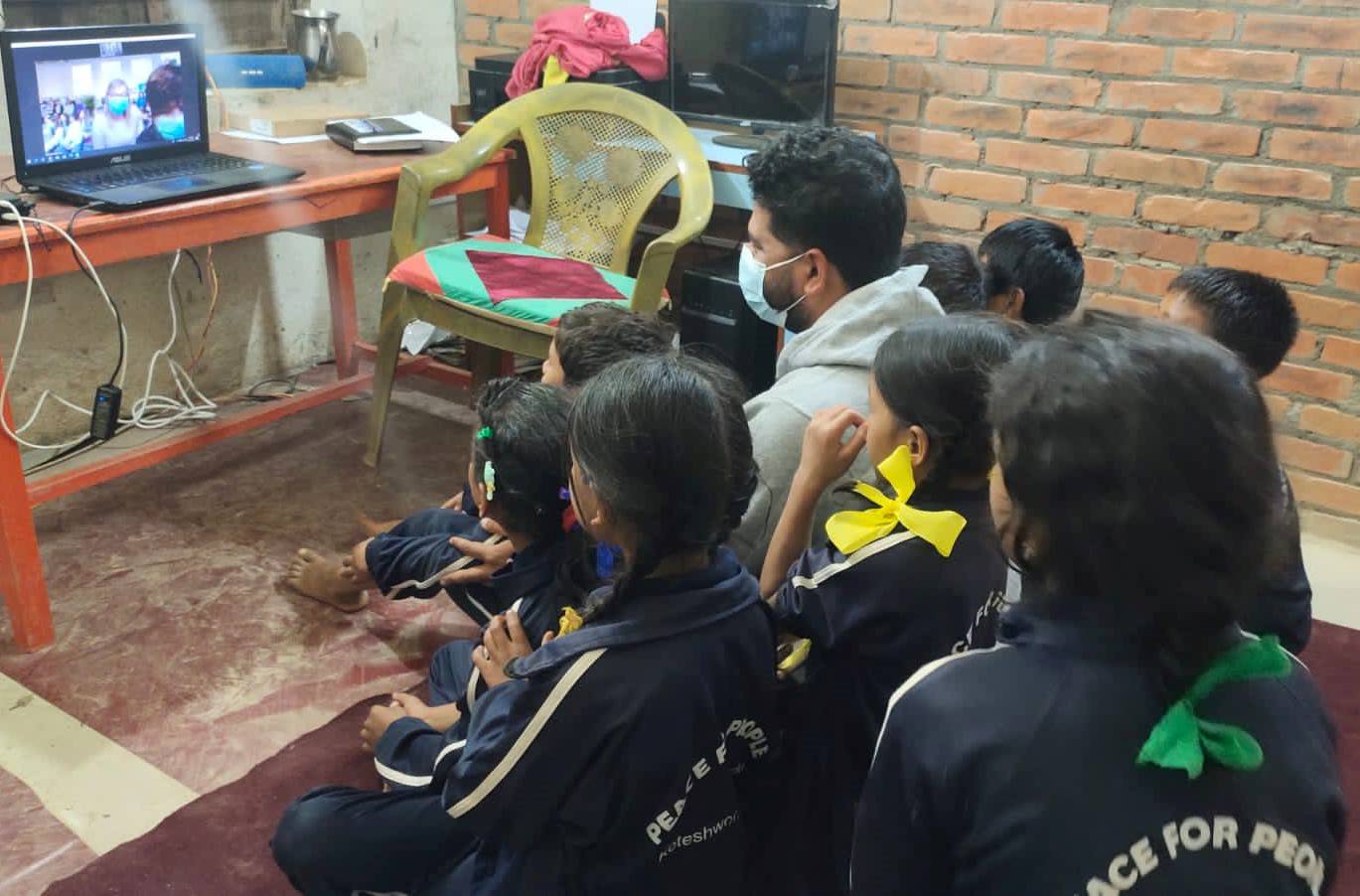
Quote: Nepal is still far behind in terms of the use of all these services, facilities, es, and technology. It is a far-fetched dream of students and teachers of the schools that we work in to visit abroad with the purpose of learning, training, or workshops. Moreover, the local political situation is impacting the development of the school system resulting Nepalese school system being still far behind most school systems of the world.
Keeping all these challenges in mind, we were still dedicated to finding a way to have children of the age group of 10 to 12 years from different countries connect and exchange on relevant topics. Through an online interactive program, children could share their personal lifestyle, hobbies, school habits, and any kind of age-specific likes and dislikes. ”
Ali Mussa, Zanzibar, Tanzania: City of Peace
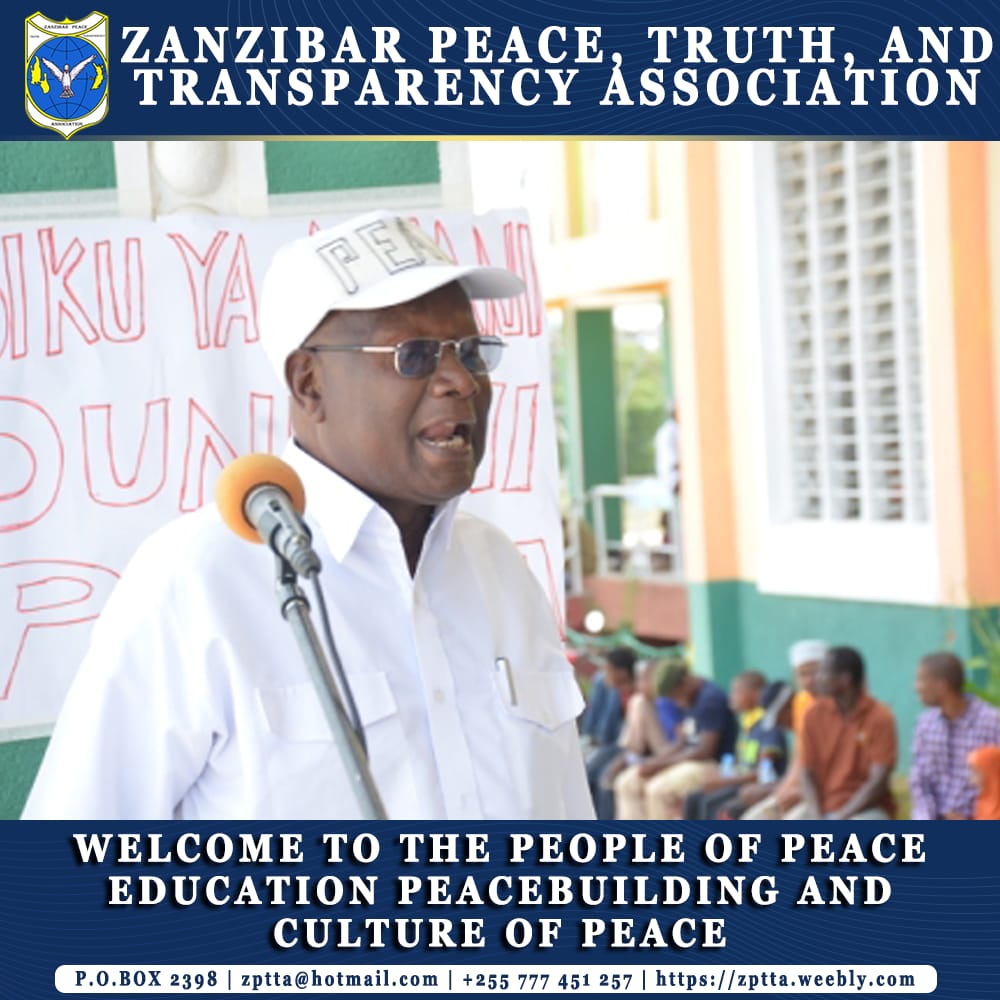
Quote: The culture of peace has been varnishes in many modern communities including Zanzibar where the culture of violence e and misunderstanding is persisting. The prevailing situation in our Communities is mainly rooted from dominated misunderstanding, conflict and unnecessary violence.
We need an interventions that will address the prevailing situation which we have identified above by introducing a long term strategic program “The transition to a Culture of peace in Zanzibar Community” with number of supporting interventions for transition to culture of peace to reduce tensions, violence, conflict that results is resulting loss of lives, injuries, destruction of properties and emigration.
Currently, the most significant way of promoting the culture of peace in our societies which is practiced by our organization is through:
1. Meetings with different levels at community, regional and national levels
2. Outreach services to a specific community with conflict challenges in non-violence strategy
3. Commemoration of World Peace Day through forums, peace marching, shows, culture activities and artistic songs, poems etc
4. Community dialogues on culture of peace and establishment of Zanzibar City of Peace Youth Clubs
ohn Mukhuta, Lubumbashi, D.R. Congo: City of Peace
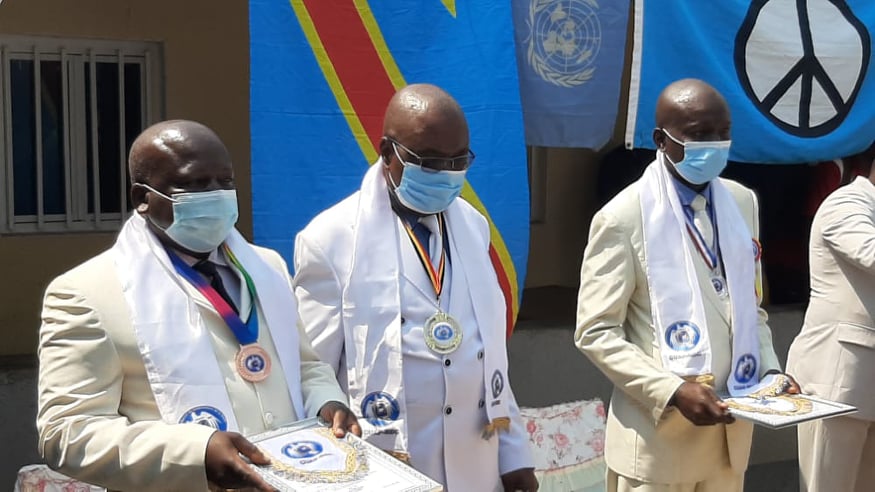 Quote: Each year, there is a celebration and commemoration of International Day of Peace.
Quote: Each year, there is a celebration and commemoration of International Day of Peace.
Also, Near Kolwezi in DRC, this group was able to coordinate peace activities with the area’s political authorities as well as the United Nations peacekeepers.
In addition the Chief of the Region gave the group 10,000 bricks in order to build a school and medical center.
Rosa Emilia Polo Quintero, Azcapotzalco, Mexico City, Mexico: City of Peace
 Quote: We have a new challenge to work with children and young people with autism. There are no links with autistic parents or young people that can help them understand that they are not alone and that there is an interest in loving them and understanding them as they are.
Quote: We have a new challenge to work with children and young people with autism. There are no links with autistic parents or young people that can help them understand that they are not alone and that there is an interest in loving them and understanding them as they are.
Based on other successful projects that we have developed as in 2008, called “The cure of Hyperactivity and Attention Deficit with Alternative Therapies” which has to do with Neuroscience, we can develop the stages of the project and of course we have with the community in Azcapotzalco of Autistic youth and children, who have expressed their need not only for information but to have an Autistic community.
Kehoda Rose, Ntungamo, Uganda: City of Peace
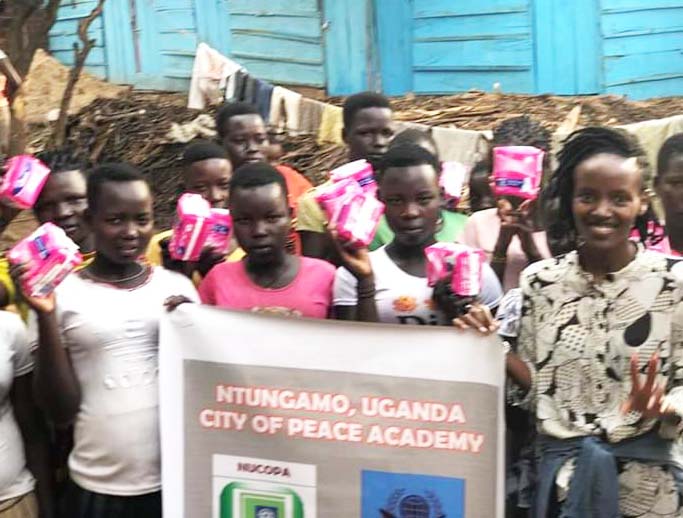 Quote: The main community challenge we are addressing is bring back the peace Calture and unemployment.
Quote: The main community challenge we are addressing is bring back the peace Calture and unemployment.
We are addressing the about challenge by Gender Action to maximize skills and Boost peace Calture and opportunities.
Our intended results is having communities with skill-employed women and youth, as well as establishing a stronger peace culture by 2024.
We trained 114 women and 250 youth through our Directorate of Industrial Training and Skilling program, which goes hand in hand with Golden Rule to improve on peace culture.
ennis Ekwere, Kaduna, Nigeria: City of Peace
 Quote: The main community challenge we are addressing is strengthening community cohesion and peaceful co-existence through diversity and inter-faith/inter-ethnic dialogues.
Quote: The main community challenge we are addressing is strengthening community cohesion and peaceful co-existence through diversity and inter-faith/inter-ethnic dialogues.
By organizing consultation meetings with young community leaders and influencers, youth clerics in interfaith and inter-ethnic forums of discussions that foster understanding, respect, tolerance of one another for a peaceful world at grassroots communities. The dialogue meetings also promotes friendly football matches between conflicting communities so as to rebuild friendship and trust, unity and progress.
The intended result is build citizens resilience to vulnerability to radicalization leading to violent extremism and terrorism. It is also intended to catch young people’s energy and channel, rechannel it to positive usefulness while raising them as peace champions in their communities.
David Wick, Ashland, OR, United States: City of Peace
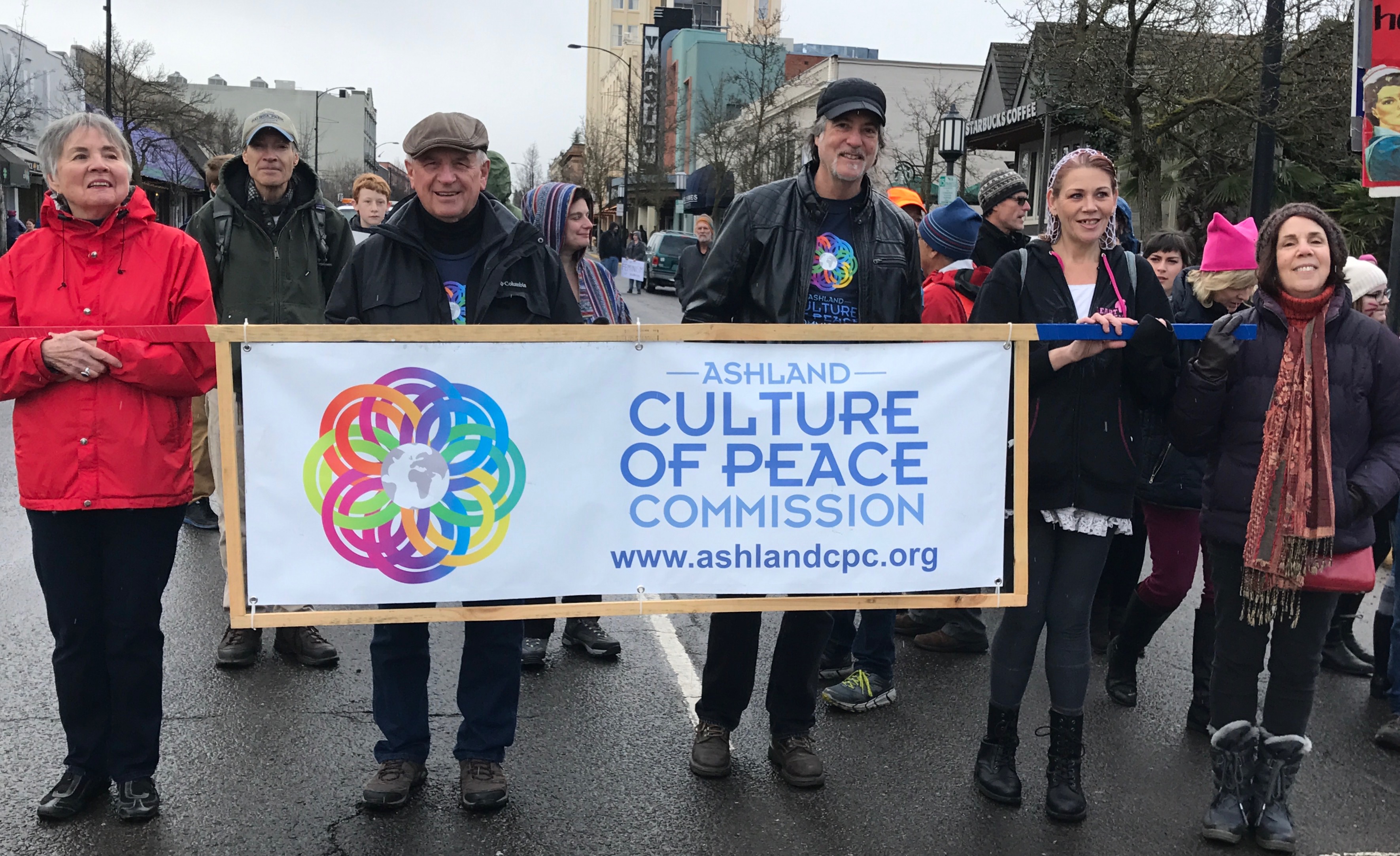 Article from the Ashland Tidings: “Leaders put City of Peace reputation at stake” by David Wick. “On May 10, 2017, the mayor and city council unanimously proclaimed Ashland a City of Peace and joined the International Cities of Peace, yet this reputation is now taking a beating. Contributing to this dynamic of differing and competing agendas for Ashland’s future, you have only met with each other in your disconnected Zoom boxes and never in person.
Article from the Ashland Tidings: “Leaders put City of Peace reputation at stake” by David Wick. “On May 10, 2017, the mayor and city council unanimously proclaimed Ashland a City of Peace and joined the International Cities of Peace, yet this reputation is now taking a beating. Contributing to this dynamic of differing and competing agendas for Ashland’s future, you have only met with each other in your disconnected Zoom boxes and never in person.
“As with any newly formed team or council, you are experiencing the forming, storming, norming, performing, and adjourning of the Tuckman development model. It is time to move out of your frozen positions with the assistance of experienced, competent mediation. There is no shame in this, only the wisdom to see the greater good and the courage to act accordingly.
“There are highly skilled people and organizations who are interested and available to assist us, such as Mediators Beyond Borders International, Rotary e-Club of World Peace, and the Northwest Peace Initiative among others. You are offered an opportunity, an “offramp,” to reestablish common values, collaborative action, and perhaps trust.
“This is not just about you, but about our community and making the conscious choice for our well-being as a City of Peace.”
Sylvain Xavier Nkembe Kemwa, Dangamvura, Zimbabwe: City of Peace
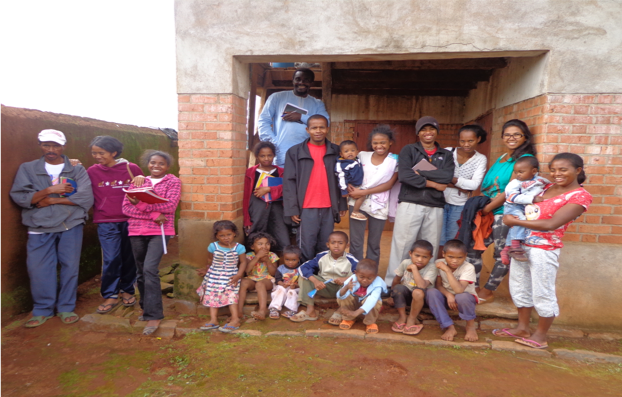 Quote: The main community challenge we are addressing is environmental protection. People have been used to cutting trees without thinking of planting one in return. Even though fire hood and charcoal are the main sources of energy, we encourage the population to think about tomorrow.
Quote: The main community challenge we are addressing is environmental protection. People have been used to cutting trees without thinking of planting one in return. Even though fire hood and charcoal are the main sources of energy, we encourage the population to think about tomorrow.
We teach people about the consequences of our actions over the nature telling them if we destroy the nature or otherwise the environment in which we live, we consequently destroy ourselves. We have already embarked in the transformation phase is to expect having in five coming years a peace garden where everyone would be free to come for relaxation, wedding ceremony etc.
The new trees we are planting is to start using them after 20 years that means in 2042. When I stood up and declared this statement of after 20 years many laughed and replied we would be already dead but I reacted saying what we are doing now is a lesson to the next generation and it’s our responsibility to do so.
